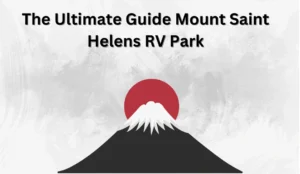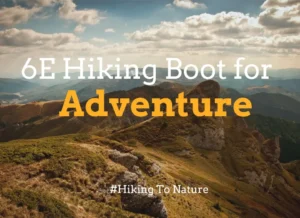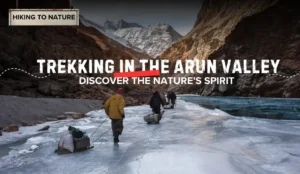Section J of the Pacific Crest Trail is more than just a hike. It’s an adventure waiting to happen, full of amazing landscapes, rugged terrain, and memories that will stay with you long after the trail ends.
After the end of this blog, you should be able to successfully complete Pacific Crest Trail Section J. In this comprehensive guide, we will review all the necessary information for this incredible journey, including trail highlights, logistics, safety considerations, and critical recommendations, whether you are an experienced thru-hiker or a weekend warrior seeking a new challenge.
Preparation for Pacific Crest Trail section j Hiking

Hiking Section J of the Pacific Crest Trail covers about 75 miles, so be ready for a journey that tests your endurance and strength. This stretch isn’t just a walk in the park—it’s a serious workout with around 18,000 feet of elevation gain.
Unfortunately, Section J isn’t the best trail for dogs. Dogs may be unable to help handle the rough terrain, possible wildlife encounters, and lack of water sources on this expedition.
Of course, you have to carry a good backpack. Because your backpack will be your lifeline while you hike. No worries. We will discuss a perfect backpack for you for a successful hiking session.
How Fit Should You Be to Tackle Pacific Crest Trail Section J Hike?

To tackle PCT Section J, you should be in strong physical shape. The 75-mile trail includes about 18,000 feet of elevation gain, demanding solid endurance and strength. Regular cardio and strength training are essential, especially for your legs and core.
You’ll be ready if you’re used to long, steep hikes with a heavy pack. The fitter you are, the more you’ll enjoy the stunning, rugged terrain.
Are there any permits or fees required?

No camping permits are required to hike the PCT Section J. However, suppose you plan to park at the Snoqualmie Pass or Stevens Pass trailheads.
In that case, you’ll need a Northwest Forest Pass or an America the Beautiful Pass. The route does not require these passes; however, they are necessary for parking. Before you go out, check the regulations for the most recent version.
What wildlife might I encounter in section j?
Wild animals like marmots, black bears, deer, and mountain goats can be seen on PCT Section J. Birds like gray jays and Clark’s nutcrackers are also common.
Is Section J Well-Marked and Maintained?
Yes. Section J of the Pacific Crest Trail (PCT) is well-marked and maintained.
The Washington Trails Association (WTA) and other volunteer groups regularly maintain this Section.
If you’re worried about water sources, good news: these are also well-signed, so there’s no need to play a guessing game with your hydration.
How to Stay Safe on Section J

To stay safe on Section J of the PCT, always carry bear spray and store food properly to avoid wildlife encounters.
Pack for unpredictable weather—layers, waterproof gear, and extra socks are necessary. Bring a map or GPS because cell service can be unpredictable, even if the trail is clearly marked.
Treat all water before drinking to avoid Giardia, and carry a basic first aid kit for common injuries like blisters. If possible, hike with a buddy, but if solo, ensure someone knows your route. Stick to these essentials, and you’ll keep your hike safe and enjoyable.
Section J Location Details and Directions

Section J of the Pacific Crest Trail runs 75 miles between Snoqualmie Pass (I-90) and Stevens Pass (Highway 2) in Washington’s Central Cascades.
To start at Snoqualmie Pass, take I-90 East from Seattle; parking near the Summit West ski area is available.
For the Stevens Pass end, take US-2 East from Seattle; the trailhead is located by the Stevens Pass Ski Resort.
Since parking can be limited at both ends, consider arranging a car shuttle or using a ride service. Public transportation is an option but requires careful planning.
What is the best time of year to hike this Section?

The best time to hike Section J of the Pacific Crest Trail is from late July to early September.
Even at higher elevations, like Kendall Katwalk, most of the snow has melted by the end of July, opening up the trail. The most beautiful wildflower viewing occurs in the latter half of July and the first days of August. Daytime highs are in the 50s and 70s (°F), while evenings can be chilly, so bring plenty of clothing.
September brings fewer crowds and crisp, clear weather. Still, you may encounter the first signs of fall with cooler temperatures and shorter daylight hours.
Mid-September is the cutoff before early-season snow can make the trail challenging again.
How long does it take to complete the hike?
Depending on your speed and degree of skill, it usually takes 5 to 7 days to complete Section J of the Pacific Crest Trail.
The average hiker covers 10–15 miles daily, giving them plenty of time to take in the sights and conquer the often difficult elevation gains. While fit and experienced hikers may be able to complete the trail in four days, others who like to take it easy and stop for extended rest breaks or side excursions may need as many as eight days.
Especially if you’re planning to hike later in the season, consider your fitness level, hiking speed, and the amount of daylight hours while planning your itinerary.
What are some must-see highlights in Section J?

Points of interest along the Pacific Crest Trail’s Section J include:
Kendall Katwalk: Views from the tiny cliffside Kendall Katwalk are breathtaking.
Alpine Lakes Wilderness: Featuring Spectacle Lake and Ridge Lake for picturesque stops.
Cathedral Rock: The towering peak is visible from Deep Lake and is excellent at sunrise or sunset.
Deception Pass: Offers panoramic mountain and valley views.
Mount Daniel and Mount Hinman: Dominant peaks providing dramatic backdrops.
Deep Lake: A serene spot below Cathedral Rock, ideal for camping.
Trap Lake: A serene, less congested body of water known for its breathtaking reflections.
Waptus River: Soothing waterways wind through verdant forests along the Waptus River.
Hiking with Respect for Wildlife

When observing wildlife on Section J of the Pacific Crest Trail, keep your distance and use binoculars to avoid disturbing animals. Human food disrupts their natural eating habits and behavior, so be quiet and never feed them.
Essential Trail Courtesy Practices
Maintain a low volume, yield to hikers making their way uphill, and never stray off the track. Everyone on the path may have a good time and stay safe if they follow some basic rules of conduct.
What to Do in Case of an Emergency

Carry a fully charged phone and know the local emergency contact numbers. If you’re out of signal range, have a backup plan, like a personal locator beacon. Always let someone know your itinerary and check in with them regularly.
Recommended Maps and Guidebooks for Section J Hikers
For navigating Section J of the Pacific Crest Trail, consider carrying the Pacific Crest Trail: Washington, Section J map by Green Trails Maps.
Also, the Pacific Crest Trail Data Book by Ben Schirfin provides essential mile-by-mile information. Day Hiking: Central Cascades by Craig Romano is another excellent resource, offering detailed descriptions of the terrain and side trips.
Get out there and explore the stunning beauty of Section J. The mountains, forests, and lakes await discovery, offering peace, challenge, and a connection to nature that’s hard to find elsewhere.






